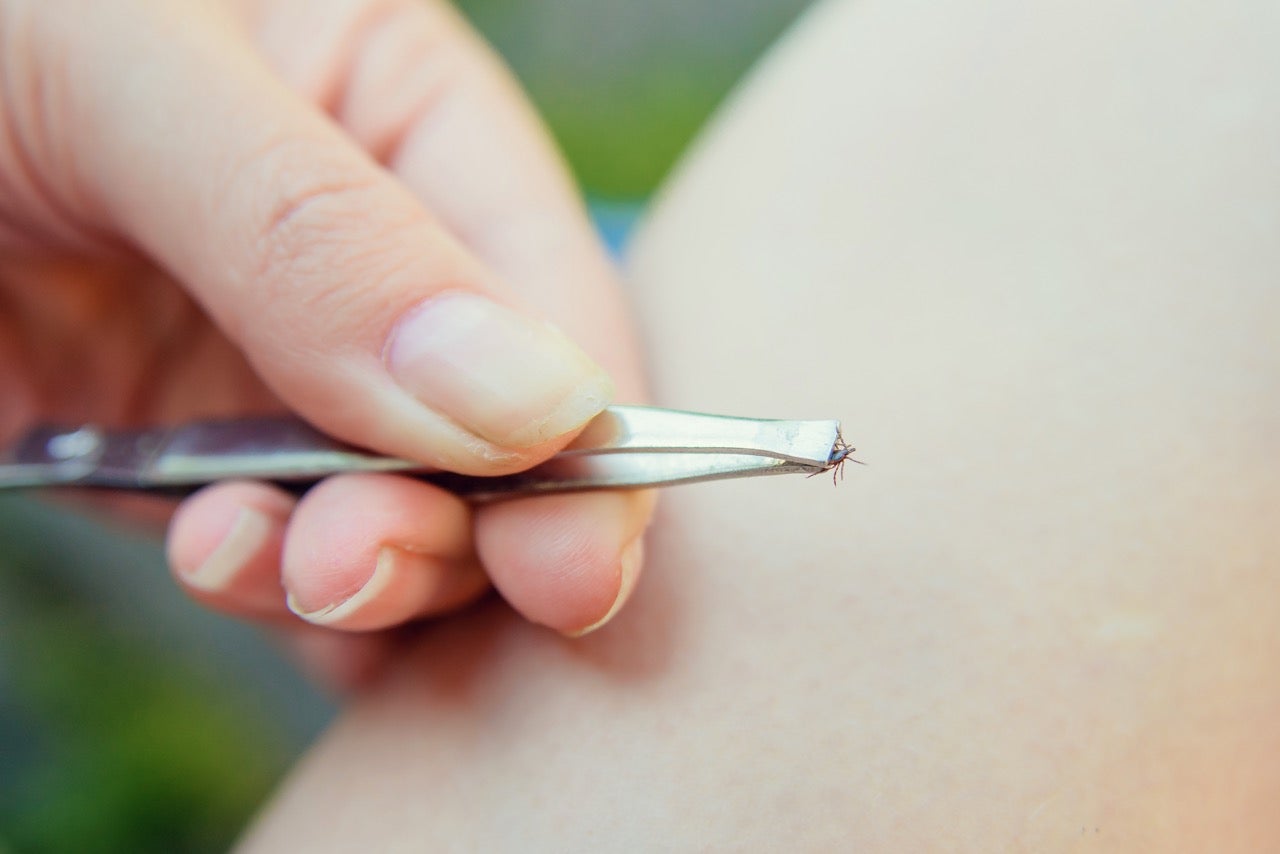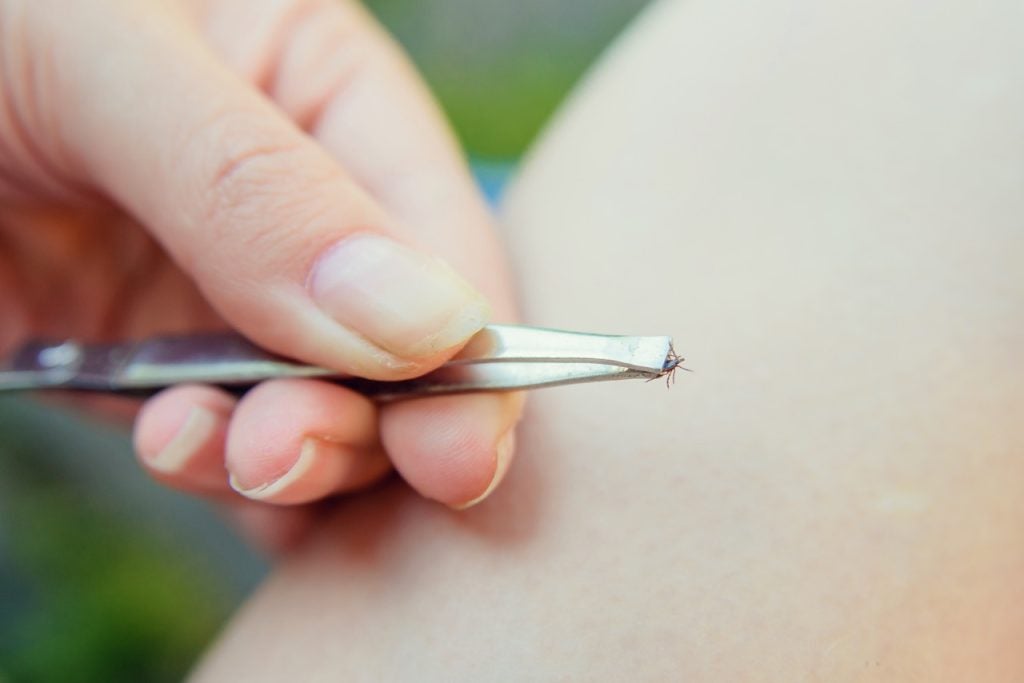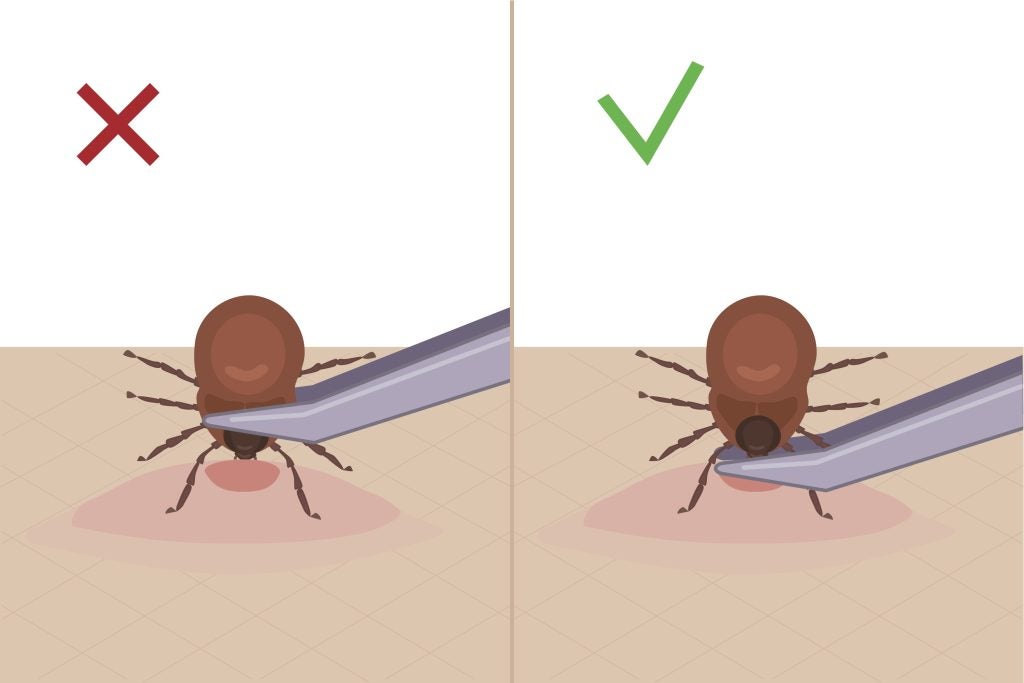
Our Editors independently research, test, and rate what we feel are the best products. We use affiliate links and may receive a small commission on purchases.
Ticks are tiny pests that can carry harmful diseases, making it crucial to remove them properly to minimize the risk of infection. If you want to learn how to remove a tick, you’ve come to the right place. Incorrect removal techniques, such as squeezing or twisting, can lead to the release of potentially infectious fluids. To ensure safe and effective tick removal, follow these steps.
How to Remove a Tick Safely
- Grasp the tick as close to the skin’s surface as possible. Take care not to squeeze the tick’s body. Credit: Latypova Diana
- Equip Yourself: Put on a pair of fine-tipped tweezers, which provide the best grip and precision for tick removal. Avoid using remedies like petroleum jelly, hot matches, or nail polish, as they may do more harm than good.
- Grasp the Tick: Using the tweezers, grasp the tick as close to the skin’s surface as possible. Take care not to squeeze the tick’s body, as this can cause the release of infectious material.
- Pull Steadily: With a firm and steady motion, pull the tick straight upward without twisting or jerking. This helps ensure the tick’s mouthparts are fully removed from the skin.
- Be Patient: Removing a tick can take time, as they firmly attach themselves to the skin. Exercise patience and avoid rushing the process to minimize the risk of leaving behind any tick parts.
- Dispose of the Tick: Once the tick is removed, place it in a sealed bag or container. You may want to keep it for identification purposes or consult with a healthcare professional if symptoms arise later. Avoid crushing the tick with your bare hands.
- Clean the Area: After tick removal, clean the bite site and your hands with soap and water or an alcohol-based sanitizer. This reduces the chances of infection and helps maintain proper hygiene.
- Monitor for Symptoms: Keep an eye on the bite area for any signs of an allergic reaction or infection, such as redness, swelling, or a spreading rash. If you develop symptoms or have concerns, consult a healthcare professional.

Ticks Suck
Remember, early detection and removal of ticks are essential to reduce the risk of tick-borne illnesses. If you’re unsure about the proper removal technique or have difficulty removing the tick yourself, seek medical assistance promptly. By following these guidelines, you can safely and effectively remove ticks, protecting your health during outdoor activities.
Sick of ticks? Read our Guide on How to Avoid Ticks.
Visit the CDC’s tick safety site for even more detailed information.

